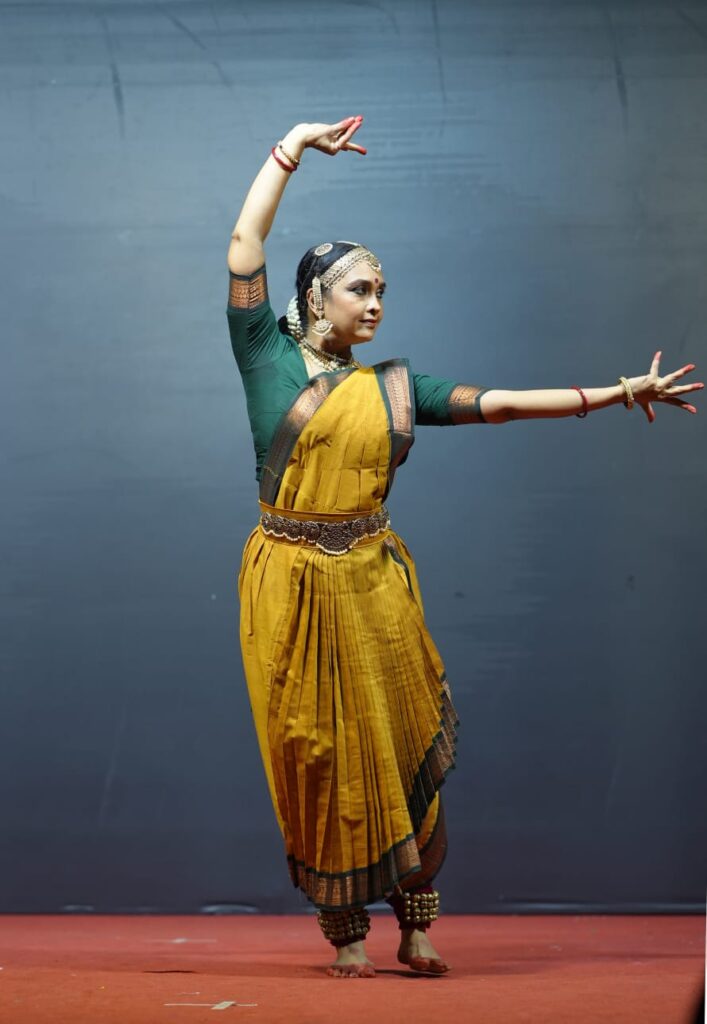The two-day Shatkala Govinda Marar Sangeethotsavam organised by Kerala Sangeetha Nataka Akademi last week at Ramamangalam showcased two sterling classical performances.
On the first day of the sangeethotsavam a two-hour Carnatic music concert was presented by Dr Sadanam K Harikumar, a multifaceted artiste known for his unique achievements in all departments of Kathakali, Sculpture and Painting.
As for his exploits in Carnatic music, he graduated into an accomplished musician under the tutelage of the maestro C S Krishna Iyer. He turned a vaggeyakara over the years by composing more than thirty compositions, that too in Malayalam. The concert was an exposition of his unmatched artistry to be cherished for long by all who had listened to him.
Harikumar opened with the Swatithirunal composition, ‘Shree ramana vibho’ in Arabhi. An invocation to Vishnu, it is an alluring description of the Lord. Harikumar made it a colourful one through the myriad sangatis and swaras, unplugged. The niravals all ending with ‘shree’ were delectable. Moreover, the inspiring rendition served to attract the attention of the audience who were listening to him for the first time.

Soon followed the Thyagaraja number in Saraswati and roopakam, ‘Anuragamu leni’. Though short, the message of the composition could be well conveyed by the musician: “Only those who meditate on the splendour and attributes to the Supreme with a form can derive genuine experiences of bliss”.
Wise choice of raagas
The demarcating feature of the concert was Harkumar’s dexterity in coining phrases of swaras to highlight the raga of each composition. This was remarkable and the next number ‘Paluku kanda’ of Thyagaraja in Navararasa kannada was a glaring example. The musician’s ability to pour out a copious supply of gliding swaras was amazing.
As a tribute to his Guru, Harikumar next rendered Kirhsna Iyer’s composition in Saranga and misra chap, “Varumo nee”. Harikumar resorted to an alap of the raga only in this number. Saranga’s traits were gradually revealed as he began to essay it. Charming was the raga as portrayed by him.
The much sought-after and popular Dikshitar composition, “Anadamrutakirshini Amritavarshini” in adi followed next. Perhaps his ability to traverse the three octaves came to the fore in this composition. Worth mentioning was his movement in the lower octave, almost reaching the lower Shadja. And the exploration of the raga was breathless at times.
Harikumar’s choice of the main raga for the concert was Reetigowla. The composition was Subbaraya Sastree’s “Jananee ninuvina’ in misrachappu. The extended alap that brought out all nuances of the raga showcased his virtuosity in comprehending the essence of the raga. True, one felt, he was radiating positive energy in the hall. That was real art music! The violin accompaniment by the veteran Prof R Swaminathan was a value addition. Also, the way he followed the vocalist throughout the concert was worthy of emulation to the younger artistes.
Percussion tani by Thrissur Sreenath on the mridangam and Deepu Elamkulam on the ghatam, was energetic and also in the right proportion.
In response to a request from one among the audience, Harikumar sang the famous Kathakali padam ‘Ajitha hare’ from the play Kuchelavrutham. A professional Kathakali musician, he appeared in his elements as he scaled the octave in the lines ‘Pala dinamayi njaanum’. The rendition will sure be long remembered.
Before concluding with the customary mangalam, Harikumar presented a ‘Kavadi chintu’, his composition.
Aesthetic movements
Rajashree Warrier’s Bharatanatyam recital on the second day of the sangeethotsavam was a thoughtful and well-crafted presentation. Each of the four pieces followed the structure of the margam, and Warrier brought fresh perspectives and expressions to the familiar compositions.

She began with a Ganesha stuti in raga Surutti, which set a holy and graceful tone. The main item, a celebrated varnam in raga Charukesi by Lalgudi Jayaraman, delved into the longing of the nayika, who pines for Krishna’s attention. Warrier’s portrayal of the nayika was tender and intense, her expressions beautifully capturing the tension between yearning and despair. In a particularly moving moment, she evoked the image of waves embracing the moon’s reflection, a poetic metaphor for the nayika’s desire. Her subtle shifts in expression, especially as she responded to the imagined music of Krishna’s flute, revealed her skill in balancing restrained elegance with emotional depth.
The third piece, Papanasam Sivan’s well-known Naan Oru Vilayattu Bommaiya, in raga Navarasa Kannada, portrayed a nayika’s call to the Goddess, her cries for refuge deeply moving. Warrier’s interpretation of a scene in sanchari inspired by Sri Ramakrishna’s devotion to Kali added a unique layer to the piece, as she depicted his surrender and ultimate union with the divine. Her shifts in tone and gaze conveyed the vulnerability and determination of one seeking grace.
Rajashree Warrier concluded her recital with the Sama composition Manasa Sancharare, beautifully narrating the tale of Kuchela’s humble offering to Krishna. Her portrayal of Kuchela’s devotion, Krishna’s gracious acceptance, and Rukmini’s silent presence was steeped in quiet intensity, leaving the audience deeply moved.
While the performance leaned mostly on abhinaya, one would have longed to watch more of her nritta marked by geometrically perfect adavus and sculptural poses. Warrier’s expressive depth and assured stage presence made her storytelling compelling. Her ability to convey layered emotions was a testament to her artistic maturity, creating an intimate and memorable experience for the audience.
The exquisite musical accompaniment elevated the recital: Dr. Sreedev Rajagopal on vocals, Prof. V. Saundarraj on veena, Bombay Ganesh on mridangam, and nattuvangam by RLV Hemanth Lakshman. Their harmonious collaboration added richness and resonance, enhancing the emotional impact of the performance.




